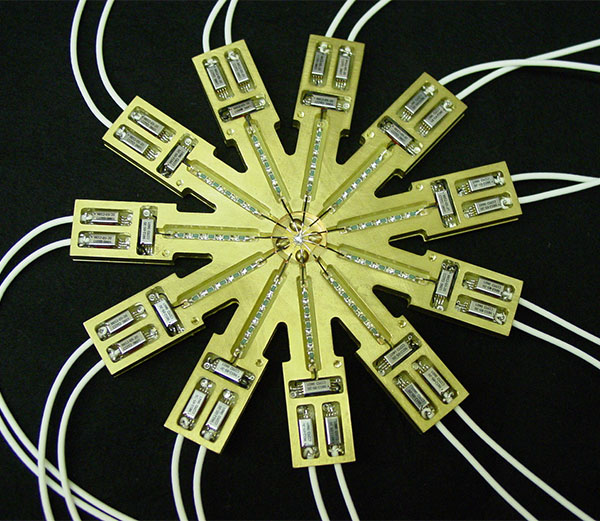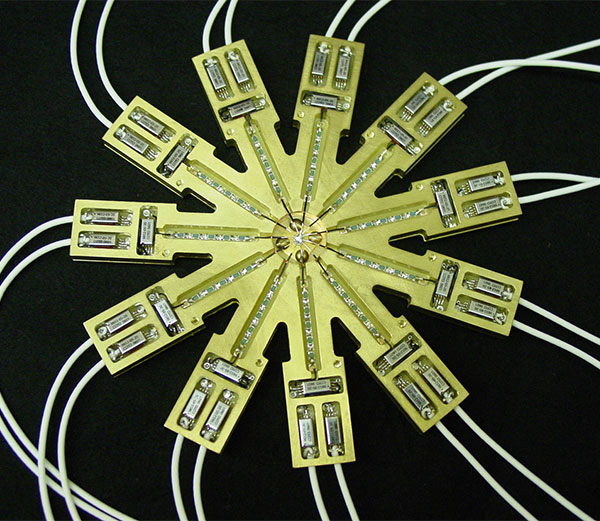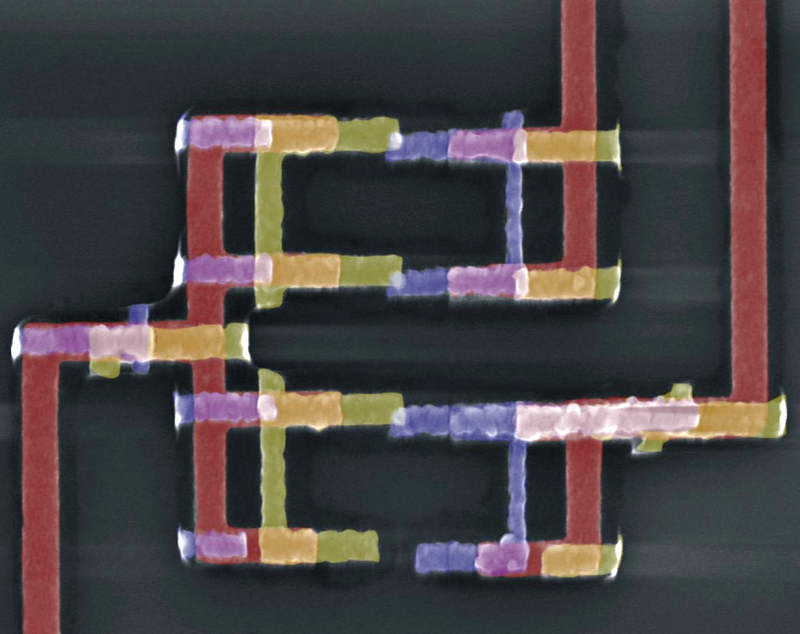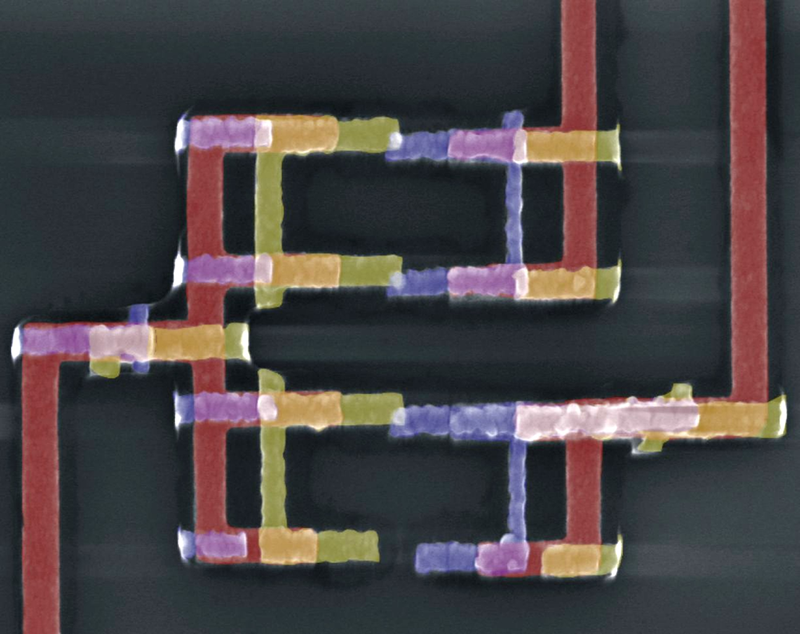Device Could Lead to New Current-Measurement Standard
Frequencies can be measured more accurately than anything else, so experimentalists try to convert other types of precision measurements into frequency measurements. Now researchers report a significant step toward creating such a link for measurements of electric currents [1]. By coupling several superconducting devices called Josephson junctions, the team has detected oscillations produced by a quantum effect with a precision beyond that observed in previous efforts. The researchers expect that further refinement of the experiment could provide the foundation for an improved standard for calibrating measurements of electric currents.
In principle, the most precise way to measure electric current would be to count the number of elementary units of charge e (the charge of a single electron) that pass through a wire in a given amount of time. But, given experimental realities, the best possible measurement using today’s technology would involve relating the current in a circuit directly to a frequency.
Sergey Lotkhov of the German Federal Metrology Institute says that a Josephson junction—a weak barrier separating two superconducting elements—offers a promising setting for such a precision measurement. If a constant current is fed into a junction, the junction acts as a capacitor: At first, as charge accumulates, the voltage across the junction grows. Once the voltage is large enough, a single pair of charges called a Cooper pair tunnels through the junction, dropping the voltage back to its original value. As this process repeats, a natural oscillation arises across the junction, with the voltage oscillating at a frequency equal to the current divided by 2e. These so-called Bloch oscillations can provide a link between current and frequency.
These oscillations have a small amplitude, but previous experimenters have managed to observe them by providing an external oscillator—a source of microwaves with which the Bloch oscillation could be synchronized. The synchronization of the two oscillators can be detected more easily than the Bloch oscillation on its own. In this synchronized state, the current vs voltage curve for the junction shows a series of Shapiro steps—plateaus of current over a range of applied voltages. These plateaus appear at current values proportional to multiples of the oscillator frequency, which is another sign of the direct connection between frequency and current.
However, the precision of such measurements has been limited by various sources of noise. To reduce the noise, Lotkhov and his colleagues fabricated an extremely small Josephson junction with a very thin tunnel barrier connected only very weakly with external measuring leads. These weak connections reduced some of the electrical noise.
The researchers were also able to reduce thermal noise by shrinking the oscillator and placing it in the same micrometer-scale circuit that held the junction. This circuit was chilled to 0.1 K for the experiment. The driving oscillator was a superconducting quantum interference device (SQUID) made of two additional Josephson junctions.
“The experiment is extremely challenging,” says Lotkhov, because the circuit has to be held at a low temperature but also experiences significant heating from currents flowing through the large resistors needed for electrical isolation. As a result of this and other experimental challenges, there is only a narrow range of conditions that will allow observations of Bloch oscillations.
The team detected Bloch oscillations synchronized with the SQUID, and they also saw Shapiro steps. “Our results are clearer than those obtained before in experiments, mainly because we have reduced the influence of thermal noise effects,” says Lotkhov. The researchers’ computer simulations agreed with their results, suggesting that they could effectively model the remaining sources of noise.
Physicist and nanostructures specialist David Haviland of the KTH Royal Institute of Technology in Sweden is impressed. “These results, together with other recent experiments, give hope that the long-held dream of a new standard of electrical current could see the light of day,” he says.
In future work, with improved circuit design, the researchers hope to further reduce the influence of thermal and quantum fluctuations in order to observe cleaner Shapiro steps. The simulations suggest that further adjustment of the link between the primary junction and the SQUID should improve the stability of the oscillations.
–Mark Buchanan
Mark Buchanan is a freelance science writer who splits his time between Abergavenny, UK, and Notre Dame de Courson, France.
References
- F. Kaap et al., “Synchronization of Bloch oscillations in a strongly coupled pair of small Josephson junctions: Evidence for a Shapiro-like current step,” Phys. Rev. Lett. 132, 027001 (2024).







